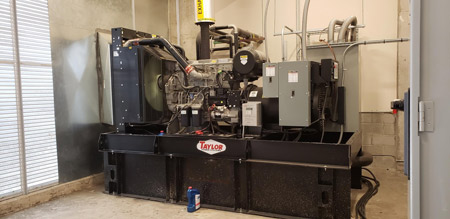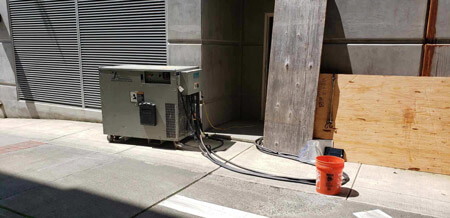




Generator Load Bank Testing

Should I “Load Bank Test” My Standby Generator?
Standby generators represent a sizable capital investment. If the standby generator fails when called into action it is almost always accompanied by potentially dangerous conditions and/or risk of significant financial loss. Yearly load bank testing is an important element of any preventative maintenance program to ensure your standby generator is capable of carrying building loads when required to. If the generator operates as an emergency standby generator for fire/life safety, it is regulated by NFPA 70, 99, 110 (Standard for Emergency and Standby Power Systems), and The Joint Commission standards, which has specific load banking requirements depending on the type of facility.

Standby generators are sized to accommodate full start up loads of a facility and can typically be sized 30-50% over the KW ratings of the facility. This situation can create many problems with your diesel powered stand by generator. Conditions such as wet stacking and carbon build up in combustion chambers, injector nozzles, piston rings, turbo chargers, exhaust piping and silencers can develop.
Wet stacking is un-burned fuel that collects in your exhaust system. If your standby generator typically runs with little or no load you will begin to see black seepage coming from your generators exhaust connections and continuous black exhaust smoke from your exhaust pipe. These are signs that your diesel engine is wet stacking. To prevent wet stacking your engine exhaust temperature would need to be over 275 degrees Fahrenheit.
Standby generators that don’t achieve the proper exhaust temperature or fail to operate at 30 percent of the generator kw nameplate rating for at least 30 minutes monthly, should be exercised under load for 30 minutes each month and load banked for two hours each year. During the annual test the standby generator should at a minimum operate for 30 minutes at 25 percent nameplate kw rating, 30 minutes at 50 percent nameplate kw rating and 60 minutes at 75 percent nameplate kw rating.
Load bank testing your standby generator annually will not only help prevent wet stacking but will also verify engine and generator performance, reseat piston rings, determine cooling system efficiency, check voltage regulator response, engine governor response and will verify your generator will function properly in the event of a power outage. If you have invested the money to have a standby generator installed, you must have a critical need for back-up power. Including a load bank test with your annual service is the best way of insuring your generator will be ready and able to respond to the next power outage.
Contact us now for Load Bank testing services.
Service area: Seattle, Bellevue, Redmond, Fall City, Sammamish, and the Greater Puget sound